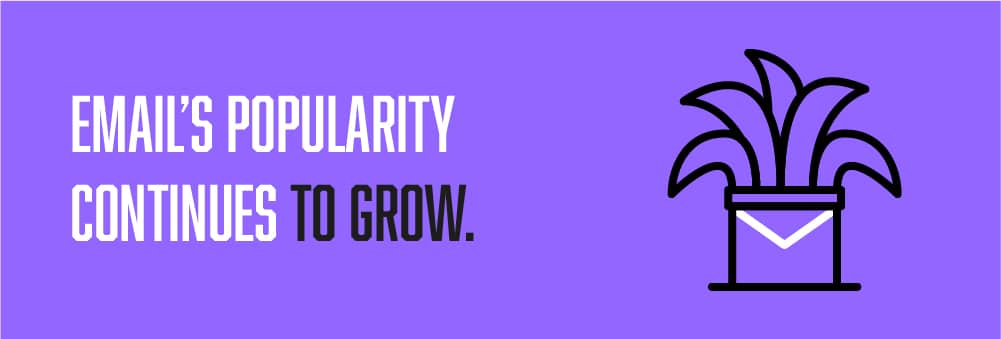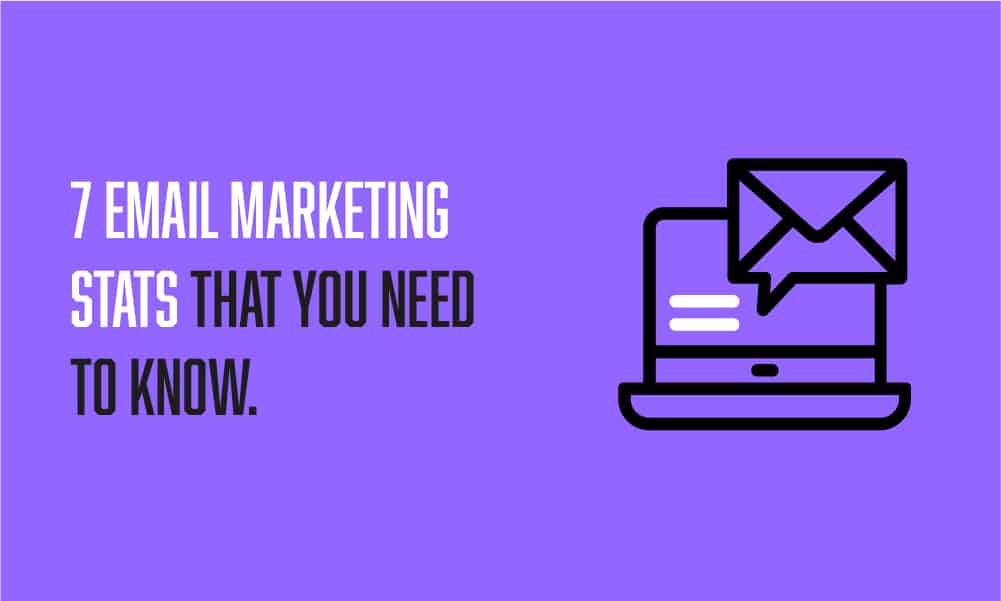In the last few weeks and months, there have been some strange things going on which have made me question more than once whether we’re actually in the ’90s again or not.
Toy Story, The Lion King and Aladdin have all been on at the cinema, The Spice Girls have been on tour and Nokia (yes, that Nokia!) have just released a brand new flip phone that people are getting excited about.
While some things have come back around, some things have never changed: sadly for me, Birmingham City are still as crap at football now as we were back in the ’90s under Barry Fry.
No matter what reminds you of the ’90s, though, it’s rare that anyone will mention one of the most important technological advancements ever when discussing the decade.
When email first launched, it was this shiny, sexy new thing people could use to instantly talk to one another via the written word, something which seemed impossible only 10 years prior.
Suddenly, paper looked pointless and if you didn’t have an email address, you simply weren’t one of the cool kids.
Subsequently, email open rates were sky-high.
Everybody opened everything and replied to everyone.
Soon enough, spammers, viagra salesmen and government officials in Uganda with a strange desire to send you millions of dollars all saw their opportunity.
As with anything, as soon as email became popular amongst the masses, it lost its cool and subsequently became as much a part of daily life as the humble letter was before it.
Fast-forward another decade and with data protection a hot topic for all companies major and minor, email marketing is a tactic that has been debated with regards to its effectiveness and longevity.
But with the GDPR dust now well and truly settled, it’s becoming clearer and clearer that – while it might not necessarily be as exciting as it once was – email is as vital now as it ever was before, if not more so.
Of course, as a digital marketing agency that sells email marketing (among other lead generation tactics), we’re bound to say that, aren’t we?
So don’t take our word for it.
In this piece, we’ve collated some of 2019’s most interesting email marketing statistics to take a good, hard look at email and ask important questions like: “Is it still worth using? “Isn’t there a better way yet?” and “Will Posh Spice ever go back on tour?”

Key Point: Email Use Continues to Grow
The first and probably most important thing to note is that, plain and simple, email use continues to grow year-on-year.
In the period from 2018 to 2023, email use is going to continue to increase by 2-3% each year, according to Statista.
A key reason for this is the fact that email has improved.
Although the basics are still the same, small tweaks and improvements have allowed companies to do a lot more and get a lot more out email marketing. Emails are now more interactive and more easily accessible from many different devices.
These changes have resulted in businesses spending more money than ever on email; analysis done by The Manifest found that as many as 43% of businesses were planning on putting more funds into their email marketing in 2019 than ever before.

Key Email Usage Statistics to Pay Attention To
Various companies and market research firms have been monitoring the state of email usage in the last few years.
As a business, here are some of the statistics you need to know. Whether you are already considering using email marketing, or you need a little more convincing, these statistics can show you which way market trends are going. If you already use email marketing, you can also think about shaking up your tactics.
1. More than half of the global population now has an email address.
The total number of active email users in the world has increased to 3.9 billion as of 2019, according to Radicati.
This is a significant portion of the world’s population and shows just how popular and relevant email use is.
It’s also interesting to note that social media users are still slightly less, with an estimated 3.5 billion worldwide.
2. The average worker receives on average 126 emails each day.
Besides knowing how many people accessed their email in the last few months, it’s also important to know how often they do.
According to Radicati, workers now receive around an average of 126 emails each day as of 2019.
This is also up marginally from the previous statistic for 2018 of 121.
This represents a 5% increase each year from 2015 to 2019 in the number of daily email users.
The same study also estimates that a whopping 246.5 billion emails are being sent on a daily basis in 2019.
3. In the next four years, 60 billion junk emails are going to be sent daily.
It’s not just a fight between important and relevant emails in your customers’ inboxes.
There are also spam emails to consider.
These can be a nuisance and despite filters and more awareness, so many spam emails are still being sent.
Spam Laws estimate that 60 billion junk emails are going to be sent daily Despite efforts by Internet Service Providers (ISPs) to introduce better spam filtering, these email are still a major problem and inconvenience.
In fact, Spam Laws found that over half of the people in their surveys regarded junk mail to still be a major problem.
This is an issue that digital marketers need to pay attention to because they must ensure that their email marketing efforts do not land up in the spam folder or get rejected.
4. Up to 60% of email opens will occur on mobile devices, depending on the industry.
More and more emails are being opened using mobile devices. In its 2018 Marketing Benchmark Report, IBM reported that up to 60% of emails are opened on mobile phones and other mobile devices for certain industries.
Examples include the leisure, sports, and recreation industries where engagement is high.
In other industries such as education, only about 38.2% of emails are opened on mobile devices. There are two takeaways here.
Firstly, marketers need to pay attention to trends in their particular industries as far as how customers are engaging with various forms of marketing to try and get a feel for how frequently competitors are likely emailing and, therefore, how much is too much.
Secondly, there is no hiding from the fact that mobile devices are now a major part of email marketing and digital marketers much tailor their emails to this.
Emails have to be designed with mobile users in mind; failing to do create emails that look as nice on mobile as they do on desktop can be an absolute mailing list killer.
5. 82% of workers check email outside of normal business hours.
Another important note to make besides where emails are read is what time they are read. More people than ever are reading their emails after work hours, and the availability of email via mobile devices is a contributing factor.
Statista reports that an estimated 82% of employees check their email after work hours.
People also check their emails pretty often, with a third of workers looking at their work emails hourly at the very minimum.
This is good news for digital marketers because the time the email is sent during the working day is not a major determinant of whether or not emails are going to be read anymore.
6. 87% of marketers use email campaigns to nurture their audiences.
The use of email marketing is very high with around 87% marketers using the tactic. according to The Content Marketing Institute.
And for good reason.
Email marketing is still one of the best ways to distribute content, keep in touch with clients and warm up cold prospects.
The key is in having a strategy in place to build up a mailing list of people who genuinely care about what you have to say and are a fit for what you sell.
Email is only Spam when it’s not wanted, so figure out:
1. What your prospects want to read and know about
2. How to get to those people and build up your database in the first place.
7. Half of marketers feel their email campaigns are very poor to average.
Interestingly though, despite the tactic’s ubiquity, many email marketing campaigns are considered poor to average, according to Smart Insights.
The main reason for this – other than those touched above – is the lack of thought that goes into emails these days.
With automation now a prime tactic, most marketers have forgotten the importance of quality and the need for personality in emails.
Instead of focusing on creating as many touch points as possible for customers and trying to build out as complicated as possible workflows, take a step back to put yourself in your prospects’ shoes for a minute.
What would grab your attention?
What would make you think?
What would make you click the link, read the article or look around the website?
Marketing might be a volume game in terms of the number of leads required, but quality is what will always dictate the volume you get in return.
Have a serious think about what you can do to grab the attention of your prospects.
A lot of brands do this very, very well: Paddy Power are a prime example of a company that has taken on their customers’ tone of voice in order to resonate with them well.
In the same way, ask yourself what makes your customers laugh, what drives them and what it is about your people and overall company personality that you want to be famous for.
Make that prominent in your email campaigns and – unlike the other half of marketers who say their email are pretty poor – you’ll start to get some genuine traction.
Thanks for reading. Enjoy this piece? Be sure to sign up to our mailing list below.
